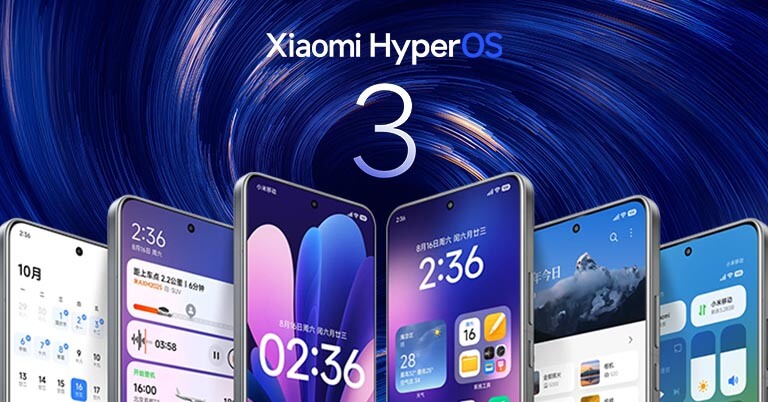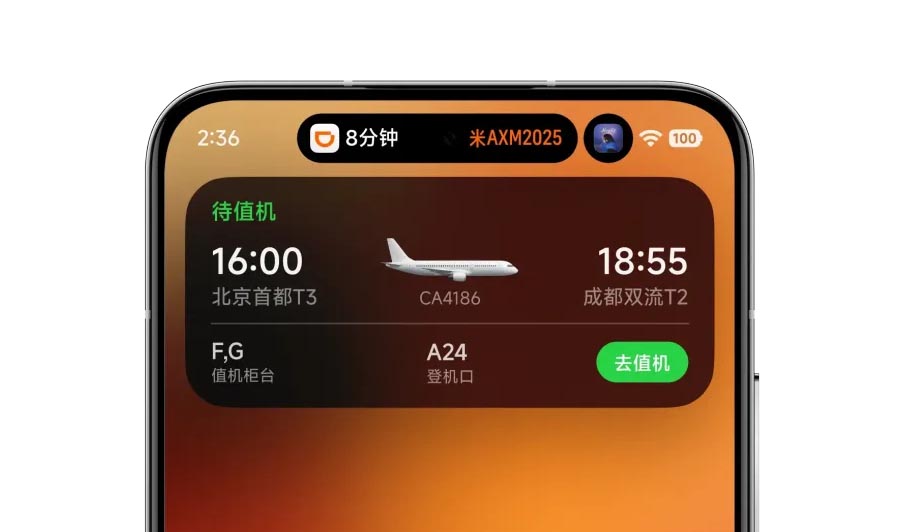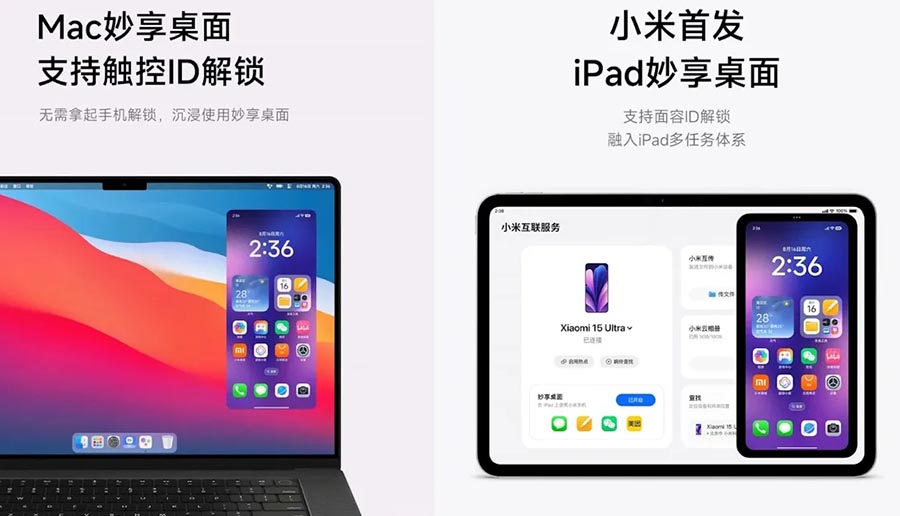
About a month ago, Xiaomi officially announced HyperOS 3, based on Android 16, marking a new chapter in the company’s operating system development. The company has officially published the stable rollout schedule of HyperOS 3 in the global market. In this article, we’ll go over everything you need to know about HyperOS 3, including its features and the complete list of devices eligible for the update.
Xiaomi HyperOS 3 (Android 16) is here
The president of Xiaomi Group Partner and Mobile Phone Division, Mr. Lu Weibing, said that HyperOS 3 is now a new starting point of Xiaomi’s operating system development. This fresh phase focuses on making the system smoother, more responsive, and more intuitive for its users.
What is new in HyperOS 3?
Xiaomi says its latest take on Android has some significant optimization in terms of performance as well. Besides smoother animations across the system, HyperOS 3 reportedly reduces app load time by 21%.
Gamers can expect an even better experience here with 15% better 1% low fps and 9% lower power draw as well.
The new Super Island
Besides all those under-the-hood optimizations, HyperOS 3 brings a lot of iOS-inspired features too.

Like Xiaomi’s take on Apple’s Dynamic Island, called “Super Island,” which offers contextual information about real-time app activities. But unlike iOS, Super Island remains active in the notification panel as well.

Whereas HyperOS 3-powered smartphones will work a lot better with different Apple devices, too. You will be able to run your Xiaomi phone’s app directly on your iPad or MacBook and even share images and sync notifications between your Xiaomi phone and an iPhone.
Other changes
Xiaomi has also introduced a notable visual refresh across the UI. Including redesigned app and status bar icons, and better notification organization. The company has also updated the “Dynamic Wallpaper” we first saw on HyperOS 2 (Android 15) to add more cinematic depth effects and better lockscreen customization.
The one new feature that caught my eye is HyperOS 3’s offline positioning, which should let you find supported devices when they’re offline or switched off.
Which devices are eligible and will get the Xiaomi HyperOS 3 update?
Xiaomi has now officially published the stable global rollout schedule, starting this month. Below is the complete timeline, including the devices:
From October to November 2025
- Xiaomi 15, Xiaomi 15 Ultra, Xiaomi 15T, Xiaomi 15T Pro
- Xiaomi MIX Flip
- Redmi Note 14, Redmi Note 14 Pro, Redmi Note 14 Pro 5G, Redmi Note 14 Pro+ 5G
- POCO F7, POCO F7 Pro, POCO F7 Ultra
- POCO X7, POCO X7 Pro, POCO X7 Pro Iron Man Edition
- Xiaomi Pad 7, Xiaomi Pad 7 Pro
- Xiaomi Pad Mini
- Xiaomi Watch S4 (41 mm)
- Xiaomi Smart Band 10, Xiaomi Smart Band 10 Glimmer Edition, Xiaomi Smart Band 10 Ceramic Edition
Between November and December 2025
- Xiaomi 14, Xiaomi 14 Ultra, Xiaomi 14T, Xiaomi 14T Pro
- Redmi Note 13 Pro
- Redmi 15
- Redmi 14C
- Redmi 13, Redmi 13x
- POCO F6, POCO F6 Pro
- POCO X6 Pro
- POCO M7
- POCO M6, POCO M6 Pro
- POCO C75
- Xiaomi Pad 6S Pro 12.4
- Redmi Pad 2, Redmi Pad 2 Pro
After December 2025
- Xiaomi 13, Xiaomi 13 Pro, Xiaomi 13 Ultra, Xiaomi 13T, Xiaomi 13T Pro, Xiaomi 13 Lite
- Xiaomi 12, Xiaomi 12 Pro, Xiaomi 12T Pro
- Redmi Note 14 5G, Redmi Note 14S
- Redmi Note 13 5G, Redmi Note 13 Pro 5G, Redmi Note 13 Pro+ 5G
- Redmi 15 5G, Redmi 15C, Redmi 15C 5G
- POCO F5, POCO F5 Pro
- POCO X6
- POCO M7 Pro 5G
- POCO C85
- Redmi Pad Pro, Redmi Pad Pro 5G
- Redmi Pad SE 8.7
- POCO Pad
Besides these, here are some other Xiaomi devices that will receive the HyperOS 3 update:
Other devices that are also eligible
- Xiaomi 15 Pro, Xiaomi 15S Pro
- Xiaomi 14 Pro, Xiaomi 14 Pro Ti Satellite
- Xiaomi 12T, Xiaomi 12S, Xiaomi 12S Pro, Xiaomi 12S Ultra, Xiaomi 12 Pro Dimensity
- Xiaomi Civi 2, Xiaomi Civi 3, Xiaomi Civi 4 Pro, Xiaomi Civi 5 Pro
- Xiaomi MIX Flip 2
- Xiaomi MIX Fold 2, Xiaomi MIX Fold 3, Xiaomi MIX Fold 4
- Xiaomi Pad 7 Ultra, Xiaomi Pad 7S Pro 12.5
- Xiaomi Pad 6, Xiaomi Pad 6 Pro, Xiaomi Pad 6 Max 14
- Redmi K80, Redmi K80 Pro
- Redmi K70, Redmi K70E, Redmi K70 Pro, Redmi K70 Ultra
- Redmi K60, Redmi K60E, Redmi K60 Pro, Redmi K60 Ultra
- Redmi K50 Ultra
- Redmi Note 15 5G, Redmi Note 15 Pro 5G, Redmi Note 15 Pro Plus 5G, Redmi Note 15R
- Redmi Note 13 4G, Redmi Note 13 NFC, Redmi Note 13R, Redmi Note 13R Pro
- Redmi Note 12 4G, Redmi Note 12 4G NFC, Redmi Note 12 Discovery, Redmi Note 12 Pro Speed, Redmi Note 12 Turbo, Redmi Note 12T Pro, Redmi Note 12S
- Redmi Turbo 3, Redmi Turbo 4, Redmi Turbo 4 Pro
- Redmi 15R 5G
- Redmi 14R 5G
- Redmi 13C, Redmi 13C 5G, Redmi 13R 5G
- Redmi 12, Redmi 12 5G
- Redmi A4 5G, Redmi A3 Pro
- Redmi K Pad
- POCO M7 Plus 5G
- POCO M6 Plus 5G
Meanwhile, watch our Xiaomi HyperOS 1.0 review:







![Best Gaming Laptops in Nepal Under Rs. 200,000 (रु 2 Lakhs) [2025] Best gaming lapotp under 2 lakhs Nepal Feb 2025](https://cdn.gadgetbytenepal.com/wp-content/uploads/2025/01/Best-Gaming-Laptops-Under-2-Lakh-Nepal-Feb-2025-Update.jpg)
![Best Gaming Laptops in Nepal Under Rs. 120,000 (रु 1.2 Lakhs) [2025] Best Budget Gaming Laptops Under Rs 120000 in Nepal 2025 Update](https://cdn.gadgetbytenepal.com/wp-content/uploads/2025/05/Best-Budget-Gaming-Laptops-Under-Rs-120000-in-Nepal-2024-Update.jpg)
![Best Gaming Laptops in Nepal Under Rs. 150,000 (रु 1.5 Lakhs) [2025] Best gaming laptops under 150k November 2024](https://cdn.gadgetbytenepal.com/wp-content/uploads/2024/11/Best-gaming-laptops-under-150k-November-2024.jpg)

![Best Laptops Under Rs. 80,000 in Nepal [2025] Best Laptops Under 80,000 in Nepal March 2025 Update](https://cdn.gadgetbytenepal.com/wp-content/uploads/2025/03/Best-Laptops-Under-80000-in-Nepal-March-2025-Update.jpg)
![Best Mobile Phones Under Rs. 15,000 in Nepal [Updated 2025] Best Phones Under 15000 in Nepal 2024 Budget Smartphones Cheap Affordable](https://cdn.gadgetbytenepal.com/wp-content/uploads/2024/03/Best-Phones-Under-15000-in-Nepal-2024.jpg)
![Best Mobile Phones Under Rs. 20,000 in Nepal [Updated] Best Mobile Phones Under NPR 20000 in Nepal 2023 Updated Samsung Xiaomi Redmi POCO Realme Narzo Benco](https://cdn.gadgetbytenepal.com/wp-content/uploads/2024/01/Best-Phones-Under-20000-in-Nepal-2024.jpg)
![Best Mobile Phones Under Rs. 30,000 in Nepal [Updated 2025] Best Phones Under 30000 in Nepal](https://cdn.gadgetbytenepal.com/wp-content/uploads/2025/01/Best-Phones-Under-30000-in-Nepal.jpg)
![Best Mobile Phones Under Rs. 40,000 in Nepal [Updated 2025] Best Phones Under 40000 in Nepal 2025](https://cdn.gadgetbytenepal.com/wp-content/uploads/2025/07/Best-Phones-Under-40000-in-Nepal-2025.jpg)
![Best Mobile Phones Under Rs. 50,000 in Nepal [Updated 2025] Best Phones Under 50000 in Nepal](https://cdn.gadgetbytenepal.com/wp-content/uploads/2025/01/Best-Phones-Under-50000-in-Nepal.jpg)
![Best Flagship Smartphones To Buy In Nepal [Updated] Best flagship phone 2025](https://cdn.gadgetbytenepal.com/wp-content/uploads/2024/07/Best-Flagship-Phones-who-is-it-ft-1.jpg)